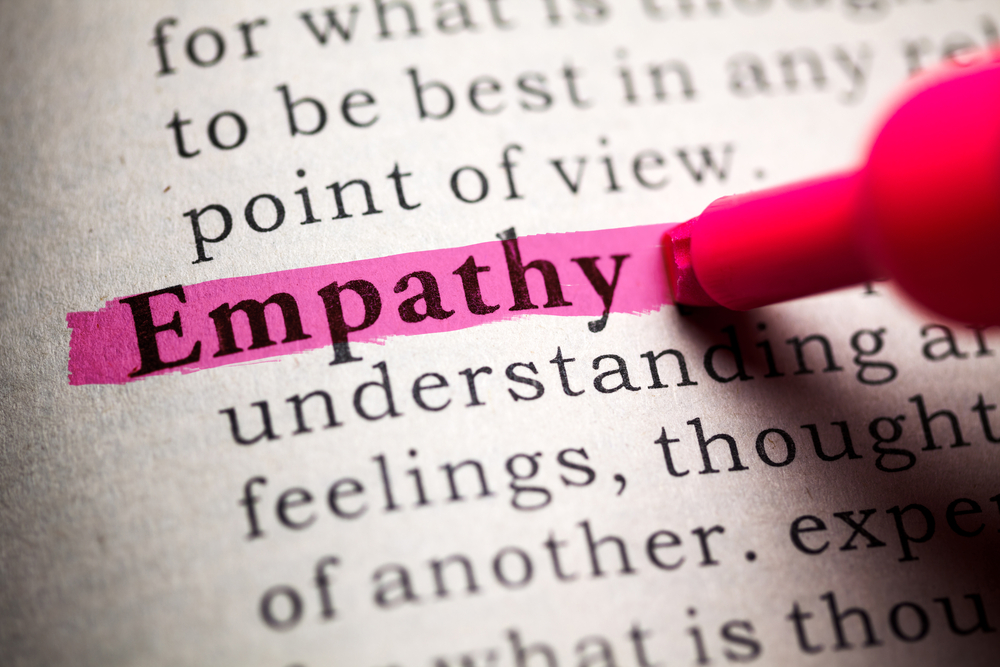The importance of empathy in branding and marketing

What do all your closest friends have in common? What makes you trust them? Why do you open up to them, let them in on your secrets and troubles?
Because they empathize with you. Because you don’t feel that you are being judged for unloading something unpleasant or uncomfortable onto them. Because you have established mutual trust by sharing things that are otherwise frowned upon in a social setting.
It is quite similar with you, your brand, and your customers. If your audience sees that you empathize with their problems and cater to their needs that they never address, they will be willing to invest in your product or service. But, if you continue to build upon that trust, and further the relationship, they will find faith in what you have to offer them.
As a marketer or a brand aiming to market your product or service, you need to go beyond the basic buyer persona. Income level, hobbies, lifestyle choices, while being effective signifiers, fail to truly help you know what your audience really needs. It’s even a step beyond neuroscience and statistics.
You need to know what disrupts your audience’s mood, and why, or what problem deeply affects them currently and in the long run, and what are they not telling you in surveys and feedback questionnaires but would wish for someone to address with them.
As a marketer or a brand, you often come across other marketers or brands and find their efforts lacking, uninspired or repetitive, but you might go ahead and employ them unintentionally, trying to switch your mindset from a customer to a seller. It is only natural to assume a more professional, disengaged or indifferent attitude towards marketing and the audience that is being targeted.
But often it is the opposite that drives sales or generates leads the most.
Uber responded to safety concerns from its customers by introducing new features on its app that lets passengers share their live location with someone they trust while they are commuting. It also lets passengers verify number plates, registration and license of the driver.
Uber has also incorporated a new in-app feature, the Uber Bike Lane Alert, that notifies Uber riders if their drop-off location is in proximity to a bike route or a bike lane. This helps riders in being extra vigilant before opening their car doors and avoiding bike accidents.
Uber has been responsive towards various safety concerns and reacted responsibly, at times proactively.
Bell Let’s Talk, a multi-year initiative by Bell Canada, is an excellent example of how a brand’s empathetic stance can not only foster relations but actively helps people. Corporate Social Responsibility is nothing new, but Bell Canada undertook the initiative to dedicate one day every year towards ending the stigma around mental health and extending a helping hand to those in need of an ally or an empathetic ear.
By realising the fact that they possess a powerful tool as part of their brand, one that can reach out to millions of people directly, Bell Canada has championed for mental health aid and acceptance. When a major corporate brand opens dialogue regarding mental health, it enables people to talk about mental health issues more openly in an office space, without fearing social isolation or even professional demotion. Bell Let’s Talk has now become synonymous with Canadian Mental Health Day and through their brand recognition, Bell succeeds in initiating conversation in national and local media regarding mental health.
But beyond corporate social responsibility, brands that constantly reinvent their strategies and innovate to cater to unspoken needs manage to stand out amongst their competition and reach out to a niche audience.
Levi’s has tapped into the conversation around sustainability and the human footprint on the environment by introducing hemp-based clothing with an eye to replacing cotton with hemp entirely. On the environmental front, hemp helps in detoxification of the soil, and provides more oxygen and nitrogen to it, while producing thrice the fiber output of cotton and using less than 5 percent of the water required to grow cotton.
Hemp clothing is also far more durable than cotton, with greatly reduced chances of wear and tear, thus providing customers with a longer-lasting product that influences their decision beyond just environmental responsibility, helping Levi’s gain social favour and improve the reputation and desirability of their clothing.
For your brand, a loud statement is not always a requirement. Look at what you currently have to offer to your customers. Next, treat your customer as a Russian doll and how each layer of the doll is a problem, need or concern and how each relates to your brand and the products or services it provides. Through this exercise, you can list their primary, secondary and tertiary wants and needs and chart a plan to respond to each.
At Jester, we help you delve deeper into the psyche of your audience and better your understanding of what you have to offer to provide tailored creative solutions to your problems. Get in touch today to find out how we can work together.
